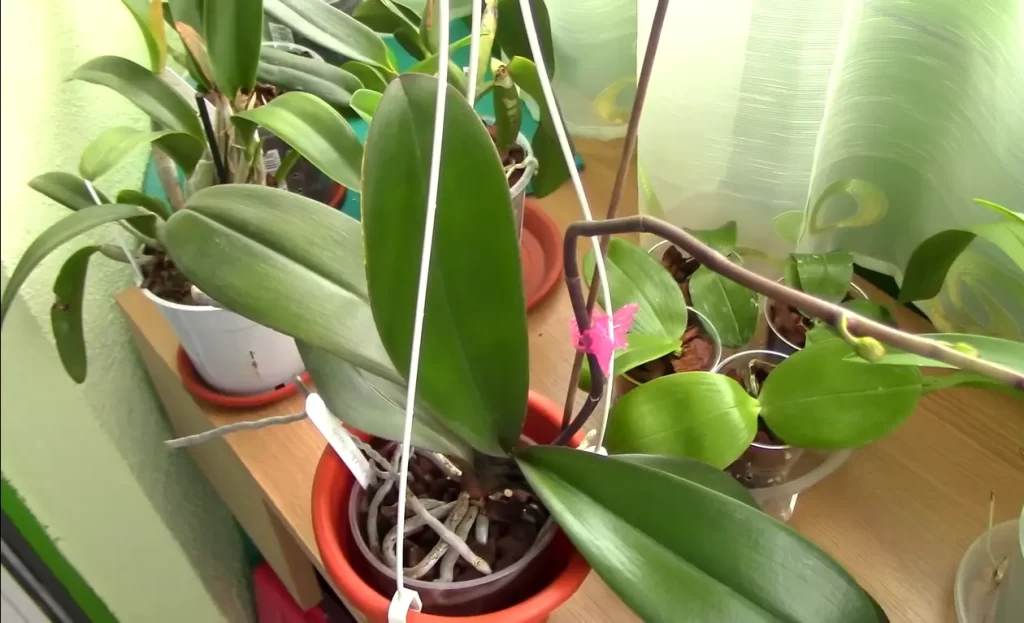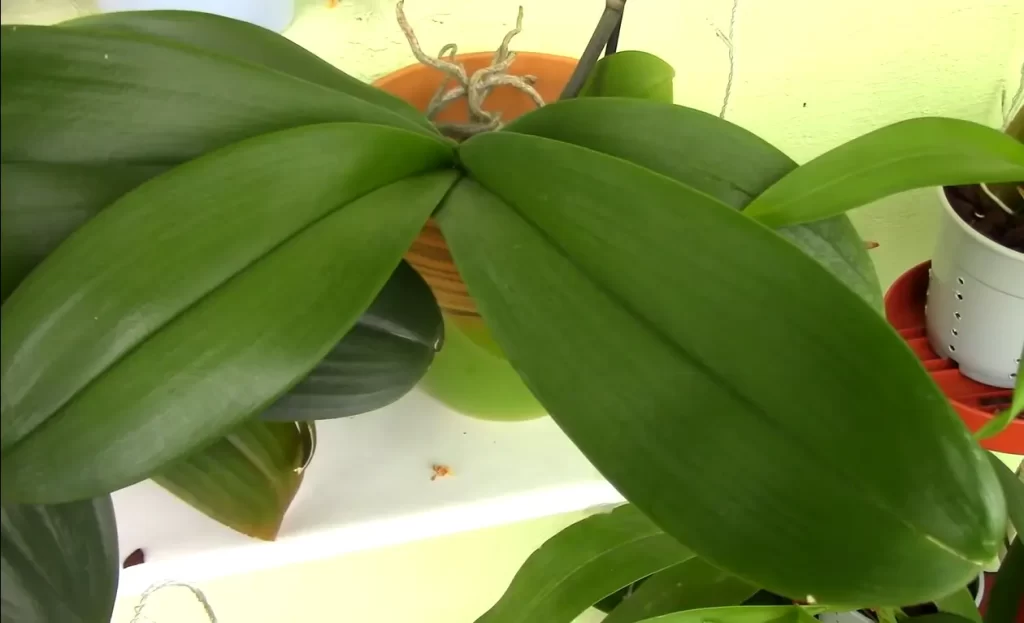Why Are My Orchid Leaves Splitting? 5 Causes and Solutions
Orchids are one of the most beloved flowering plants among gardeners and indoor plant enthusiasts alike. However, despite their stunning appearance, these plants can be notoriously picky to care for.
One common problem that orchid owners may encounter is split or cracked leaves. These things may raise a question: Why are my orchid leaves splitting?
The most likely cause of orchid leaves splitting is inadequate humidity levels. If humidity levels are too low, the leaves may split, allowing more air to enter and moisture to escape.
For your convenience, in this blog post, we will explore the factors that can cause orchid leaves to split, including environmental factors, pest infestations, and nutrient deficiencies.
A Brief History of Orchids
Orchids have a long and fascinating history dating back to ancient times. The first recorded instance of orchids dates back to ancient China, where they were highly prized for their beauty and medicinal properties.
During the Victorian era, orchids became a symbol of luxury and status, leading to a craze for collecting and cultivating them. Today, orchids are widely cultivated for their stunning flowers and unique foliage.

They require specific care and conditions to thrive, such as a humid environment, indirect sunlight, and regular watering. The health of orchid plants can be affected by irregular watering, infection, and leaf splitting, so proper care is essential for their longevity.
Is It Normal For Orchid Leaves To Split?
Yes, it is normal for orchid leaves to split. The splitting of orchid leaves can be due to several reasons, including environmental factors such as humidity, watering, and sunlight. Orchid plants require a humid environment, but too much humidity can cause leaf splitting.
Overwatering or irregular watering can also lead to leaf splitting, as can exposure to direct sunlight. Maintaining proper care and providing the necessary nutrients for orchid plants is essential to prevent leaf splitting or yellow leaves.
In some cases, leaf splits can also be caused by infection or other conditions. If you notice irregularities in your orchid leaves, consult a plant expert for proper diagnosis and treatment.
Why Orchid Leaves Split
Orchids are prized for their exotic beauty and are popular among gardeners and plant enthusiasts. However, one common issue that orchid growers face is leaf splitting, which can cause concern. Here, we will discuss the possible reasons why your orchid leaves are splitting.
Lack of Moisture
Orchids require adequate moisture to thrive, which can cause the leaves to split. Insufficient or irregular watering can result in dry and brittle leaves more prone to splitting.
High Humidity Levels
Orchids are native to humid environments, and a lack of moisture in the air can cause the leaves to dry out and split. On the other hand, too much humidity can also be a problem. If the air is too humid, it can create a breeding ground for fungi and bacteria, leading to leaf infections.
Direct Sunlight
While orchids require adequate sunlight to thrive, direct sunlight can damage their leaves. Excessive exposure to direct sunlight can cause the leaves to dry out and become brittle, resulting in splitting.
Root Conditions
The health of an orchid’s roots is critical to its overall well-being. If the roots are damaged, it can impact the plant’s ability to absorb nutrients and water, leading to leaf splitting.
Infection
In some cases, leaf splitting can be a sign of leaf infection. Fungi and bacteria can attack the leaves and cause them to split or crack.
How to Treat Split Orchid Leaves
Orchids are known for their beautiful flowers, but sometimes the leaves may develop splits or tears. Various factors, such as improper care, environmental conditions, or infection, can cause this. Here, we will discuss how to treat split orchid leaves.
1. Identify the Reason for Split Leaves
The first step in treating split orchid leaves is to identify the reason for the split. Common reasons include irregular watering, direct sunlight, lack of humidity, and infection. Once the reason is identified, it will be easier to address the underlying issue.
2. Adjust Watering and Humidity Levels
Orchids require consistent moisture and humidity levels to thrive. Irregular watering can cause stress to the plant and lead to split leaves. To prevent this, establish a watering schedule and ensure the soil is neither too dry nor too wet. Additionally, orchids prefer a humid environment, so consider using a humidifier or placing a humidity tray near the plant.
3. Avoid Direct Sunlight
Orchids prefer indirect sunlight, which can damage the leaves and cause splits. If the plant receives too much direct sunlight, move it to a location that receives more shade.
4. Check for Infection
Infection can also cause split leaves in orchids. Check the plant for signs of infection, such as yellow leaves or brown spots. If the infection is suspected, treat the plant with a fungicide or consult a professional for further advice.
How to Prevent Orchid Leaves From Splitting
One common problem that orchid owners face is split leaves, which can detract from the plant’s beauty and indicate an underlying issue. Here, we will discuss how to prevent orchid leaves from splitting.

1. Maintain Adequate Humidity
One of the primary reasons for split orchid leaves is insufficient humidity. Orchids thrive in a humid environment, and when the air is too dry, their leaves can become brittle and split. To prevent this, use a humidifier or humidity tray to maintain humidity levels around your orchid plants.
2. Water Properly
Overwatering or underwatering your orchids can cause their leaves to split. Ensure you water your orchids properly by following a consistent watering schedule and using lukewarm water. Avoid excess water deposits, which can lead to root rot and other infections that can cause leaf splitting.
3. Provide Adequate Sunlight
Orchids require adequate sunlight to produce healthy leaves and flowers. However, too much direct sunlight can cause their leaves to burn and split. Ensure your orchids receive indirect sunlight and avoid placing them in areas with excessive sunlight exposure.
4. Take Care of the Roots
Healthy roots are essential for healthy orchid leaves. Ensure your orchids’ roots are healthy by providing adequate nutrients and watering them properly. Avoid damaging their roots by repotting them too frequently or using poor-quality potting soil.
How To Tell If an Orchid Needs Water
Orchids are beautiful plants that require specific care to thrive. One of the most important aspects of orchid care is watering. To tell if your orchid needs water, check the soil’s moisture level by sticking your finger about an inch deep into the soil. If it feels dry, your orchid needs water.
Another way to tell is by checking the leaves. If the leaves are limp or wrinkled, your orchid is dehydrated and needs water. However, if the leaves are splitting, it may be a sign of overwatering. It’s also important to provide a humid environment and avoid direct sunlight to keep your orchid in good condition.
Verdicts
“Why are my orchid leaves splitting?” After reading the discussion above, it is clear that there are several possible causes of orchid leaves splitting, including too much sun, insufficient watering, or fertilizer burn.
So, examine the environment, watering, and fertilizing practices to determine the true cause of orchid leaf splitting. Additionally, if the orchid is in a pot without drainage, consider repotting the plant to ensure the roots are not in water.
With proper care and attention, orchid owners can prevent the leaves from splitting and keep their plants healthy and vibrant.
